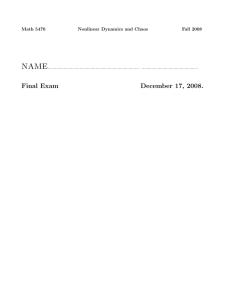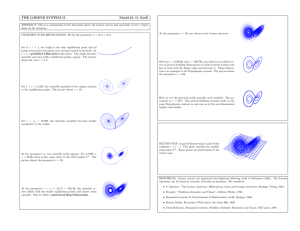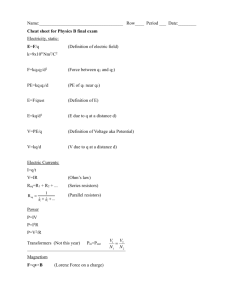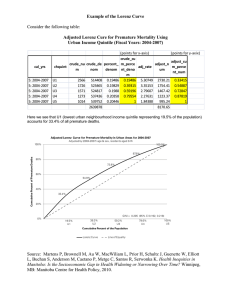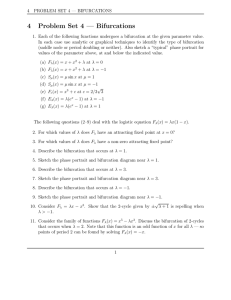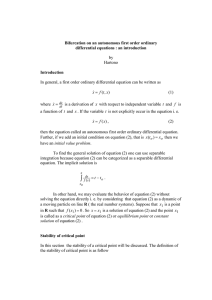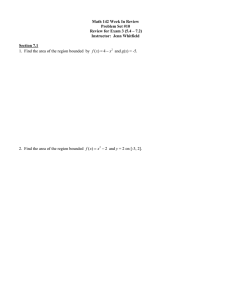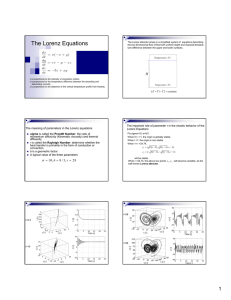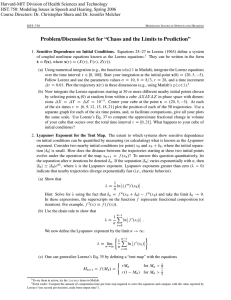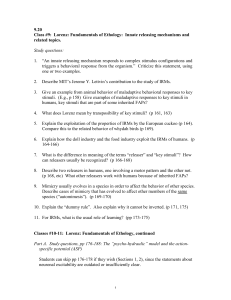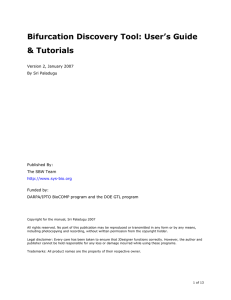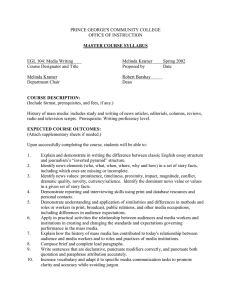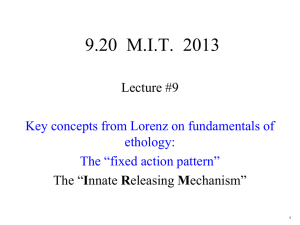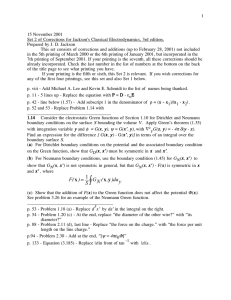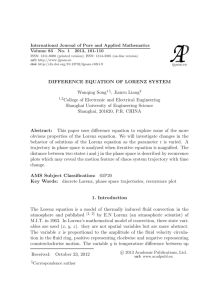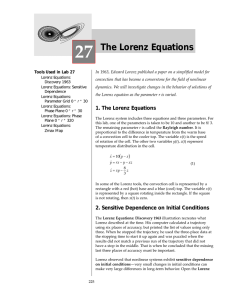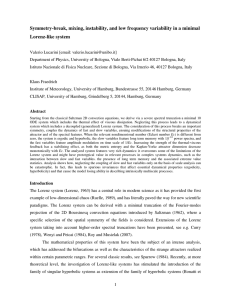NAME Final Exam Due: 12-noon, Tuesday, May 4, 1999
advertisement
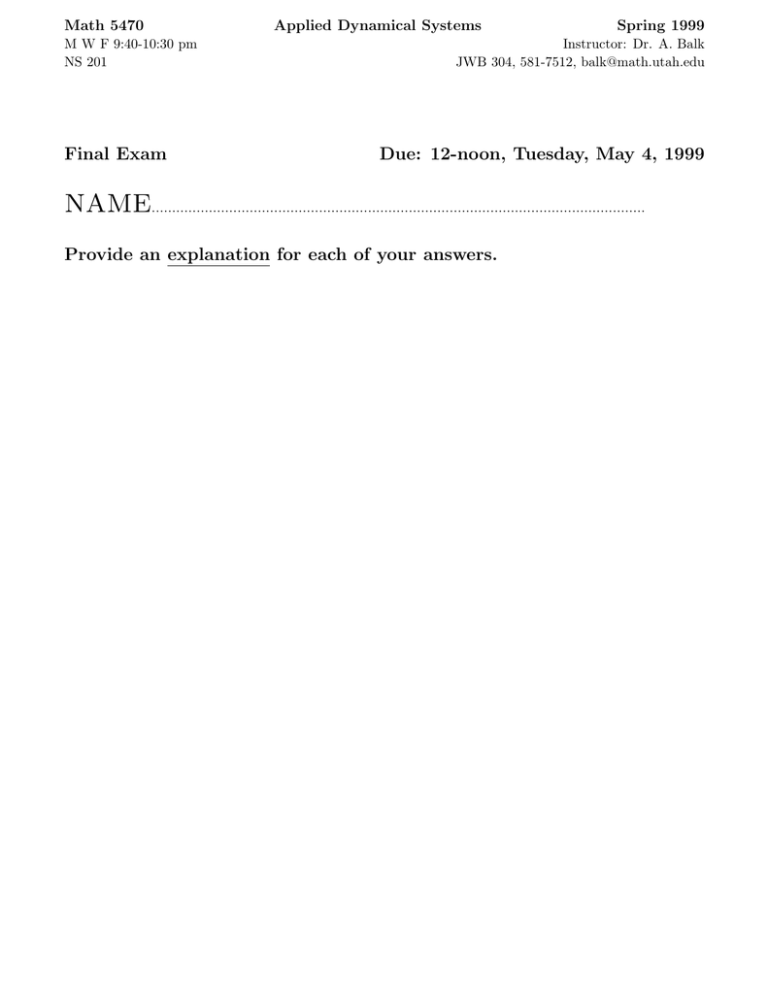
Math 5470
M W F 9:40-10:30 pm
NS 201
Final Exam
Applied Dynamical Systems
Spring 1999
Instructor: Dr. A. Balk
JWB 304, 581-7512, balk@math.utah.edu
Due: 12-noon, Tuesday, May 4, 1999
NAME.........................................................................................................................
Provide an explanation for each of your answers.
1. What is the dimension of the phase space for a system of two particles,
which is described by the following equations:
r̈1 + 0.1ṙ1 = (r2 − r1 )(r1 − r2 )2 t
r̈2 + 0.01ṙ1 = (r1 − r2 )(r2 − r1 )2 t
(r1 and r2 are 3-dimensional vectors that chatacterize the locations of
the particles)?
2. Consider the system
ẋ = x(1 − µx + x2 )
(x(t) is a scalar function, µ is a real parameter). How many bifurcation
points does it have?
Plot its bifurcation diagram for −∞ < µ < +∞, and indicate the
stability of various branches of fixed points.
3. Find the index of the unit circle {(x, y) : x2 + y 2 = 1} with respect to
the vector field defined by the following system
ẋ = x2 + y 2 ,
ẏ = x2 − y 2 .
4. Consider the system
ẋ = y(1 − x),
Does it have a periodic orbit?
ẏ = x(1 − y).
5. Can a fixed point be stable but not attracting?
Can a fixed point be attracting but not stable?
6. The system
ẋ = 1 − µx + x2 y,
ẏ = (µ − 1)x − x2 y
is known to have a Hopf bifurcation at some critical value of the parameter µ. What is this critical value?
7. Consider an oscillator with “small” dissipation:
ẍ + ẋ + x = 0
( is a small parameter, 0 ≤ 1). This second order differential
equation can be written as a system of two first order equations:
ẋ = y,
ẏ = −x − y
Take the positive x-axis as the Poincare section line and find the corrseponding Poincare map.
8. Give an example of a system which simultaneously possesses the following two properties
(1) it is dissipative, i.e. any volume in phase space contracts under the
flow,
(2) “almost” any trajectoty goes to infinity as time t → ∞.
9. Is it true that all trajectoties in the Lorenz system do not go to infinity
as t → ∞?
What does it mean that the Lorenz system exhibits sensitive dependence on initial conditions?
10. Consider the iterated map xn+1 = 2 + µxn
(µ is a parameter, −∞ < µ < +∞).
1). Does it exhibit sensitive dependence on initial conditions?
2). Is the dynamics of this map chaotic?
11. What is the Lorenz map? How did Lorenz decide that the attractor in
his system is not just a “vert long” stable periodic orbit?
12. Consider Feigenbaum’s renormalization equation
g(x) = αg 2 (x/α).
Verify that
the function g(x) =
x
together with the constant α = 2
1 + cx
(1)
satisfies this equation (c is an arbitrary constant). Explain why the
solution (1) does not describe the sequence of period doubling bifurcations in the logistic map.
13. Devide the closed interval [0, 1] into four quarters. Delete the open second quarter from the left. This produces S1 . Repeat this construction
indefinitely; i.e. generate Sn+1 from Sn by deleting the second quarter
of each of the intervals in Sn .
1). Sketch the sets S1 , . . . , S4 .
2). Compute the box dimension of the limitting set S∞ .
3). Is S∞ self-similar?
